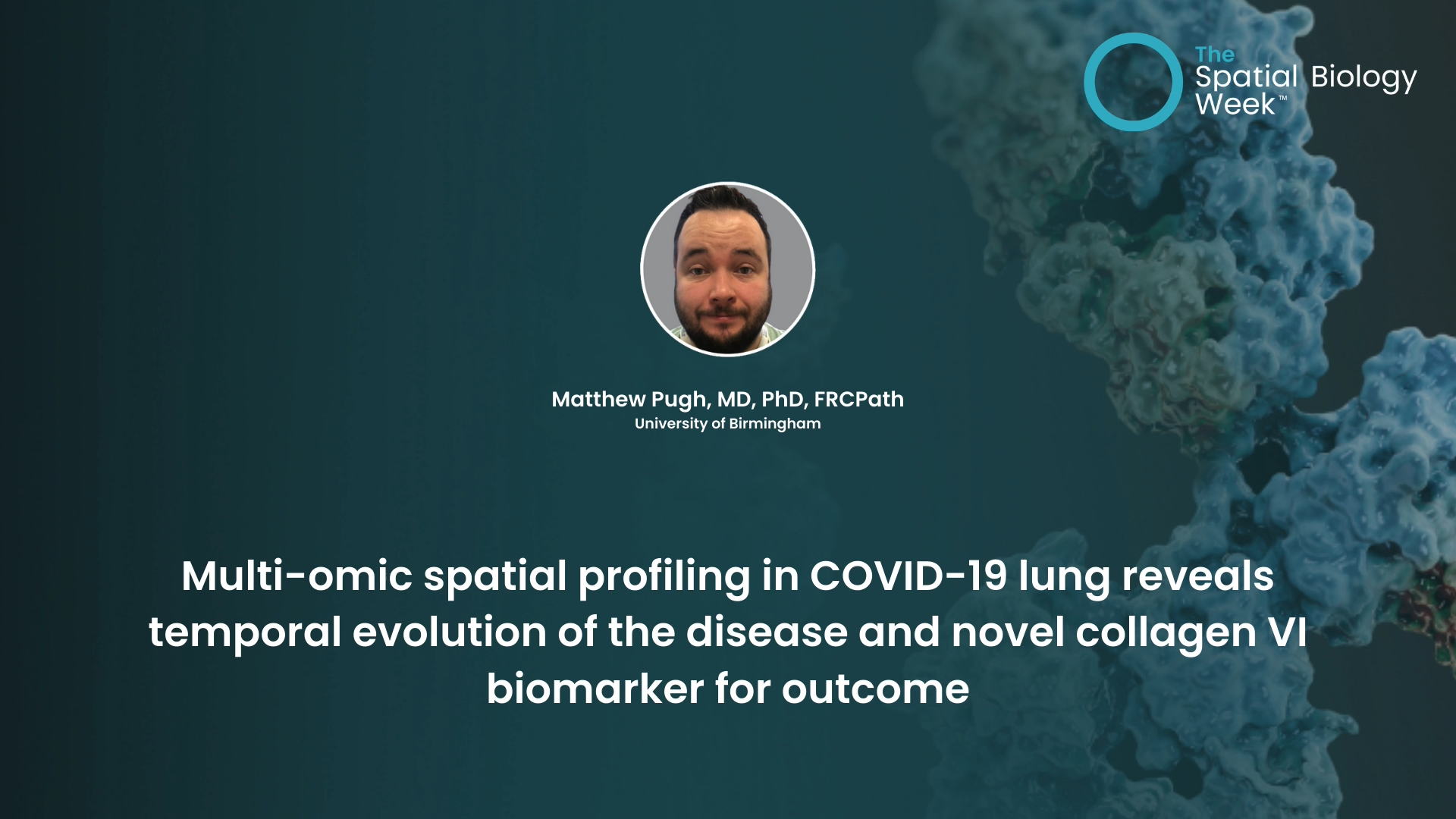Whilst the peripheral immune response to COVID-19 infection is well characterised, less is known about the tissue response in the lungs of affected patients. We conducted a multi-omic investigation in post-mortem lung tissue from fatal COVID-19 infection comprising bulk Quantseq RNA sequencing, spatial transcriptomic profiling on the Nanostring GeoMx, multiplex immunohistochemistry on the Lunaphore COMET™ and in-situ transcriptomcics with RNAscope. We found the SARS-CoV-2 virus was progressively cleared in more temporally advanced disease. Furthermore, collagen VI was found to be transcriptionally up-regulated by bulk sequencing and within the interstitium on spatial transcriptomics. These findings were supported by multiplex immunohistochemistry at a proteomic level which showed fibrillar deposition of collagen VI in the interstitum. To validate these findings clinically, we looked at blood markers for collagen VI synthesis and degradation by ELISA in a cohort of severe and mildly infected COVID-19 patients. Blood markers of collagen VI synthesis (PRO-C6) was significantly predictive for mortality in hospitalised (p = 0.0065) and intensive care (p = 0.028) COVID-19 patients. Overall, blood PRO-C6 levels, based on increase interstitial lung deposition, could help identify high-risk of patients enabling better treatment stratification. The study also demonstrates the power of post-mortem investigation and spatial profiling in elucidating clinically relevant insights into complex disease phenomena.
